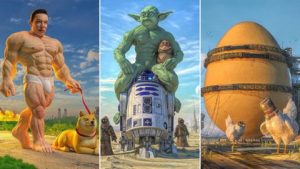NFT is not a swear word or even a magic formula. It is hard science. The token technology has turned the digital art market upside down, at least for a while. NFTs are creating artificial scarcity.
The simple explanation is that an NFT, a Non-Fungible Token, is a digital certificate stored on a blockchain. It is used for different types of intellectual property authentication. The art world now makes use of it to guarantee the uniqueness of digital artworks. The idea is the same as behind the cryptocurrency bitcoin. A blockchain or a blockchain network is a shared, transparent ledger, a digital register, a kind of safe notebook exhibiting all transactions and all changes to them. No changes can be depleted.
What we know for sure is that NFTs are fundamentally changing the digital art market. Ownership is being abled as NFTs are creating rarity, artificially. This is the one thing needed to enable trading at competitive prices.
Not long ago a unique piece of digital art was a long shot in the sense that it could have been bought or sold. Digital art can by definition be endlessly copied. The challenge has been to authenticate and create unique pieces, to create shortage in the market place, thus affecting pricing.
And prices have skyrocketed. The first so called NFT virtual artwork was sold at over 69 million dollars at the Christie’s auction last February 25.
What we don’t know is whether the prices are a result of a hype or beginners luck in a new environment. The traditional art world has been slow to recognise digital art sales in NFTs. Art experts surely hesitate, because the pace is not slow, the market is unknown and volatile, there are indications of a bubble and prices may come down. The opposite might just as well happen.
Most things of value can be tracked and traded on a blockchain network. It minimises go-betweens, it reduces risks and cuts costs for all parties involved in the transactions.
A blockchain is first of all transparent. It cannot be tampered with. Nobody can change a transaction after it has been recorded to the shared digital register. An error in the changed can be reversed, but the operation is visible.
The digital token is the artist’s signature
There are fungible and non-fungible tokens, the former representing physical assets like cars or houses, the latter intellectual property like patents and copyrights. The digital token is the artist’s signature and it is also created by the artist. The sales and prices of these identifiers have exploded in 2021. Artists may also be offered a percentage of all future sales, unlike on more traditional trading platforms.
At the same time, efforts are made to increase the value of physical art pieces. Burning a Banksy can make it more valuable, as witnessed not long ago. The stunt was performed by Injective Protocol, a company that first bought a screen print from Taglialatella Galleries in New York and then burnt it. The burning of the print was then live-streamed on a Twitter account, as a piece of blockchain art.
The history behind the historical sale of the Beeple piece at Christie’s goes back as far as to 2007, when the American digital artist Mike Winkelmann, alias Beeple, started posting digital artworks on a daily basis. The 5000 piece digital collage auctioned is titled “Everydays: The First 5000 Days”. It was sold at nearly 70 million dollars as a JPEG file and an NFT.
There are quite a few digital artworks in process out there, globally, awaiting to be valued and owned, as the ownership of digital artworks is becoming extremely popular.
Credit images: Xataka; Beeple; The Art Newspaper
